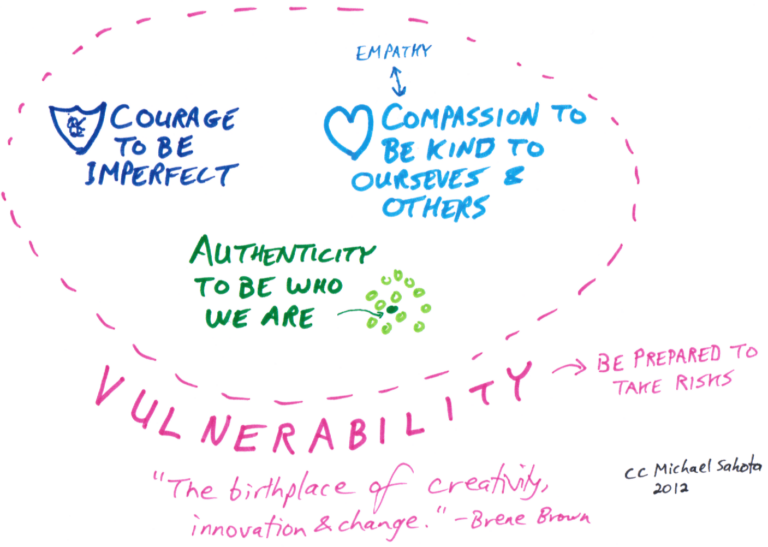In the world of education, there’s a significant shift taking place from focusing solely on academic achievements to nurturing students’ emotional well-being and resilience. The concepts of vulnerability and shame resilience play a crucial role in this transformation. In this article, we’ll delve into the profound impact of these concepts in classroom environments and how they contribute to creating a culture of courage and growth.
The Courage to be Vulnerable
Vulnerability, often misconstrued as weakness, is actually a profound form of strength. It’s the willingness to show up as one’s authentic self, even when faced with uncertainty or the fear of judgment. As Brené Brown, a renowned researcher and speaker, emphasizes, vulnerability is an integral component of courage, innovation, empathy, and creativity. In essence, without vulnerability, growth and meaningful connections become stunted.
The Four Skill Sets of Vulnerability
- Vulnerability: The cornerstone of courage, vulnerability involves embracing uncertainty and exposing oneself emotionally.
- Clarity of Values: Knowing one’s values allows individuals to align their actions with their beliefs and fosters a sense of authenticity.
- Trust: Building trust requires vulnerability. Trust is essential in fostering genuine relationships and collaborative environments.
- Rising Skills: The ability to get back up after setbacks and failures is a critical aspect of vulnerability. Resilience is key to overcoming challenges and continuing to grow.
Shame Resilience: Breaking Free from the Shackles
Shame is a powerful emotion that can be debilitating if left unaddressed. It revolves around the belief that one is unworthy of love and belonging due to a perceived inadequacy. Shame often leads to behaviours such as hiding, people-pleasing, or lashing out in anger. However, developing shame resilience can help individuals navigate these feelings and build healthier responses.
Distinguishing Between Shame, Guilt, Humiliation, and Embarrassment
- Shame: Focuses on the self, leading to feelings of being inherently bad or unworthy.
- Guilt: Centers on behaviour, prompting recognition of a specific action’s negative impact.
- Humiliation: Arises when someone else belittles or humiliates an individual, causing feelings of undeserved embarrassment.
- Embarrassment: Results from a temporary lapse in judgment or behaviour, often leading to laughter once the moment has passed.
Building Shame Resilient Classrooms
In educational settings, it’s crucial to foster shame-resilient environments where students can learn and grow without fear of unworthiness. Teachers play a pivotal role in this by addressing shaming behaviours, modelling vulnerability, and creating a space for open dialogue. By distinguishing between shame, guilt, humiliation, and embarrassment, educators can empower students to express their emotions, share their experiences, and develop the skills to navigate challenges.
Conclusion
The journey towards creating courageous classrooms begins with embracing vulnerability and fostering shame resilience. Educators have the power to influence not only students’ academic success but also their emotional growth. By acknowledging the importance of vulnerability, promoting open communication, and teaching the skills of shame resilience, educators can create environments where students feel valued, empowered, and capable of overcoming adversity. As we continue to evolve in our understanding of education, let’s remember that the power of vulnerability and the strength to overcome shame can transform classrooms into spaces of growth, connection, and empowerment.







